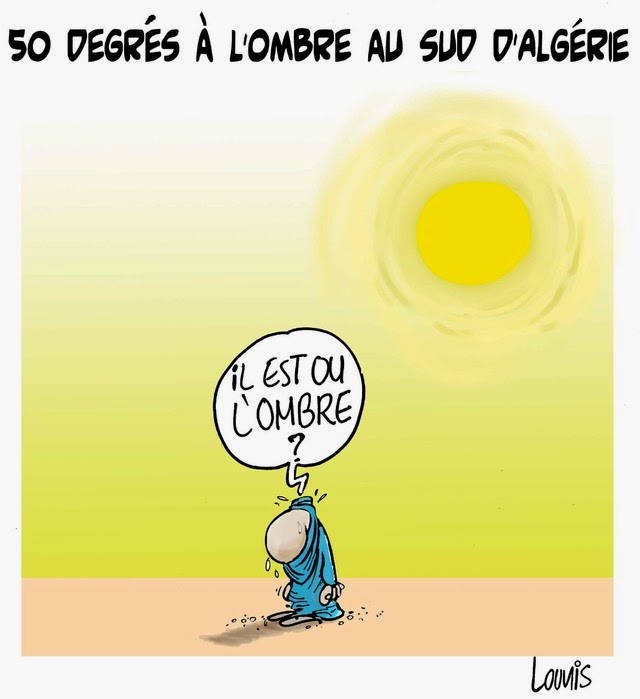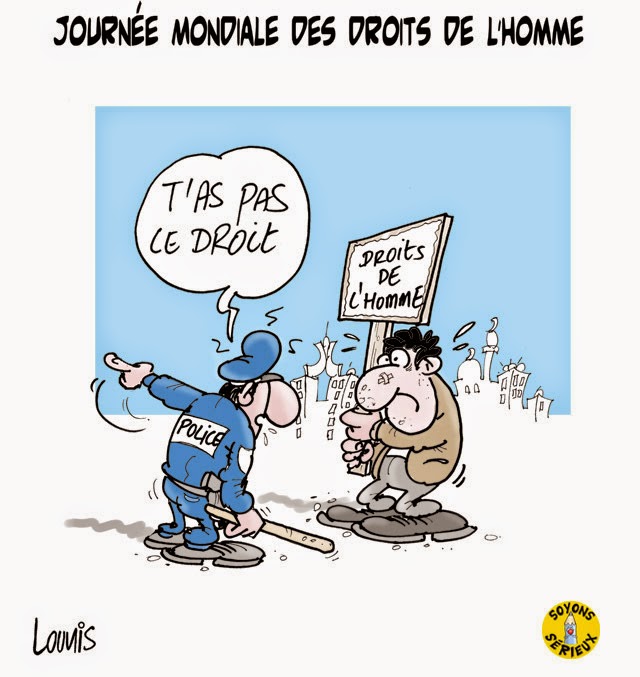Movement and Its Opposites
 The Algerian cartooning background of Djamel Lounis is instantly recognizable for its roots in Belgian/French 20th century postwar comic strips. A rounded contour with no fear of speaking in as clear a voice as the quality of the contour. All the more outspoken in leaving most of the paper in a void. All is said with the one person or the clash between the two of them that no more is needed. Even a comment on the weather turns into a menacing question.
The Algerian cartooning background of Djamel Lounis is instantly recognizable for its roots in Belgian/French 20th century postwar comic strips. A rounded contour with no fear of speaking in as clear a voice as the quality of the contour. All the more outspoken in leaving most of the paper in a void. All is said with the one person or the clash between the two of them that no more is needed. Even a comment on the weather turns into a menacing question.Djamel Lounis,
50C in the shadows at the south of Algeria,
August 5, 2012.
- The shadows, where?
August 5, 2012.
- The shadows, where?

Djamel Lounis,
Iran is thought to be in possession of the nuclear bomb,
November 19, 2011
All the more menacing in a society in which the authorities do not even see the need for an exclamation mark, while denying the citizens their rights:
 |
| Djamel Lounis, Human Rights Day, December 29, 2012. - You do not have the right |
Djamel Lounis' take on the IS in recent days is particularly poignant for using the traditional setting of a cartoon, in which two persons meet and battle out their positions. In this case the movement of freedom is taken to a full stop by being nailed to the ground by the sheer violent party. Stabbed in the back as it happens.
And on talking of backstabbing, when a flag is this frayed, it is about time it was burned. They are disrespectful to the very thing they claim to worship....
 |
| Djamel Lounis, The Islamic Caliphate seeks to root itself everywhere, September 9, 2014. |
The freedom of movement in his country, mentally as well as physically, is inescapably the central theme too in the self-portrait of the artist. Always the promise and as always only the reality of waiting:
 |
| Djamel Lounis, The Free Circulation of the Algerians, March 3, 2008. |
The cartoons shown are courtesy of Djamel Lounis and must not be reproduced without his permission.

